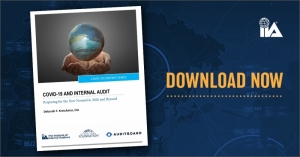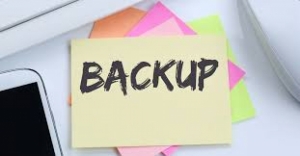عرض العناصر حسب علامة : السحابة الالكترونية
الإثنين, 26 سبتمبر 2022 11:40
فيروس كورونا والتدقيق الداخلي
نشر في
محاسبة و مراجعة
الخميس, 30 أبريل 2020 09:10
نصائح للتدقيق من المنزل في ظل كورونا
نشر في
محاسبة و مراجعة
الأحد, 03 نوفمبر 2019 10:14
عندما تجتمع الثقة مع البصيرة
نشر في
تكنولوجيا المعلومات
الأربعاء, 16 أكتوبر 2019 10:27
العودة إلى النسخ الإحتياطي
صناعة المحاسبة على وشك التأمين ، لقد كان مقدمو تقنية المحاسبة هم ضحايا الإنقطاعات الكبيرة التي تسببت فيها التهديدات الخارجية ، والمحاسبون يريدون معرفة كيفية حماية أنفسهم.
معلومات إضافية
-
المحتوى بالإنجليزية
Back to backup
The accounting industry is on edge about security, and rightly so. Accounting tech providers have been the victims of high-profile outages sparked by external threats, and accountants want to know how to protect themselves.
Backing up data can seem like a tired topic. But the way we back up our critical records is, or should be, different today than it was a few years ago. There are multiple reasons for this — the most obvious one is the movement to the cloud, but the proliferation of the amount of data that we generate today is also considerably different for many of us than what it was several years ago.
Let’s face it, if nothing else, the cloud is just plain convenient a place to store a copy of your important client files, correspondence, applications and serial/keys, and emails. And most of us have at least two cloud repositories at hand — Google Drive and Microsoft OneDrive — and both are attractively priced if more space is needed.
I’m not saying that you shouldn’t be backing up in the cloud. I use both of the above cloud storage solutions for backup of some of my files, Dropbox for files I want to share, and the backup software I use, Acronis, offers the option of backing up in the cloud, a feature I take advantage of.
I also back up locally to network-attached storage (NAS). Again, the Acronis software I use lets me do this as well as store files in the cloud. This isn’t done out of paranoia, but simply because I have multiple NAS devices on my network, and it’s no trouble on my part to backup to one of these as well.
The disc: Schrodinger’s data
One other place I also tend to store important files — mostly things I’ve written like these columns, articles, various White Papers I’ve authored, and copies of commercial software applications — is on recordable DVDs. I’ve done this for years and I have optical media going back more than several decades in some cases. I’ll cut another disc every few years or so, just to be on the safe side, more frequently if the contents are particularly valuable.
But recently, I read a cautionary article that mentioned many of the discs recovered from the 9/11 tragedy were unreadable. Some from physical damage, and some from being exposed to the elements. That brought to mind the fact that as good a backup media optical discs are, they aren’t indestructible. In fact, my production PC, an Intel NUC, doesn’t have an optical drive at all. When I need this capability, I have to plug in a USB drive. That’s also true of many of today’s laptops, especially Ultrabooks.
Articles I’ve read seem to indicate that many recorded optical discs stay readable for up to 30 years, but a significant number don’t. And that holds true for discs you may have bought containing commercial software such as MS Office or system discs for Windows. The problem is that you don’t know if a disc has become unreadable until you try and read it. Optical discs become unreadable for a number of reasons including mishandling or improper storage. Discs are pretty impervious to moisture, but atmospheric contamination can penetrate the plastic and oxidize the metallic film that is actually the recordable medium. The type of film used in the disc does have some effect on its permanence with gold being the most resistant to oxidation. Silver and aluminum are somewhat more vulnerable, but it’s pretty much impossible to tell the composition of the discs you are using.
Dual layer discs are particularly sensitive to environmental problems because one layer may be perfectly readable while the second is full of read errors. These 8GB capacity discs have two layers of recordable film, and the amount of power to the laser that reads and writes the disc determines which layer is being accessed.
I tend to recreate important discs every few years, including commercial discs. When I burn a new disc, I not only mark it as to content, but also the creation date, and a projected date to replace it with a newly burned disc. I also always check the “verify” box when I burn a disc. It adds a bit of time to the process, but if creating a new copy of the disc introduces error, I want to try burning another copy. And I don’t throw away the previous successful copy of the disc, but rather place it in a sealable sandwich bag and store it along with whatever previous versions I have in a second larger quart or gallon resealable bag.
This approach is probably not for everyone, but I have plenty of room for storage in the basement, and over the years have lost enough discs to read errors to make it an attractive practice. And since I tend to buy spindles of 100 discs when they go on sale at Fry’s, the discs I’m getting probably don’t have the lifespan of a premium disc. But with the difference in per disc price between a premium brand name disc and the house brands, I can easily afford to make backup copies every few years, rather than wait a decade or more just to find a disc has developed read errors.
You may not be as paranoid about this as I am, but it seems that making backup copies of discs containing important information or commercial software, at least occasionally, is a sensible practice and one that can be done when you find you have some spare time, especially as burning a copy can be done in the background while you work on something else.
نشر في
تكنولوجيا المعلومات
موسومة تحت




